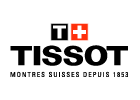Enhancing Security with Access Control and Video Surveillance
In today’s world, the importance of maintaining robust building security cannot be overstated. With increasing concerns regarding unauthorized access and potential threats, integrating advanced monitoring systems has become essential for safeguarding both assets and individuals.
Video surveillance serves as a pivotal component in reinforcing the protective measures of any facility. By implementing comprehensive observation techniques, organizations can deter criminal activities and quickly respond to incidents, ensuring a safer environment for all.
Moreover, modern safety systems leverage cutting-edge technologies to offer real-time insights and automated alerts. This proactive approach not only enhances the overall protective framework but also instills a sense of trust and assurance among employees and visitors alike.
Implementing Role-Based Access Control for Enhanced Security
Role-based authorization is a crucial component in establishing a comprehensive framework for building safety systems. By assigning specific roles to users, organizations can manage permissions more effectively, ensuring that individuals have access only to the information and areas pertinent to their responsibilities.
This approach not only streamlines operational efficiency but also significantly reduces the risk of unauthorized access. Different personnel, from administrative staff to maintenance crews, require varying levels of access. Tailoring permissions according to their roles minimizes vulnerabilities while simplifying the management process.
Moreover, integrating this system with existing safety technologies, such as alarm systems and monitoring devices, creates a more robust environment. Automated alerts can be established for unauthorized attempts to breach secured areas, further fortifying the overall infrastructure.
By implementing a role-based framework, organizations can maintain an organized and secure method for managing personnel access, ultimately leading to a safer and more compliant facility.
Integration of Video Monitoring and Entry Management Systems
In today’s world, the amalgamation of video monitoring and entry management systems is pivotal for developing a robust safety framework. This collaboration not only streamlines procedures but also fortifies the protective measures implemented across various environments.
When these systems are unified, they create a seamless interface that allows users to monitor activities in real-time while managing entries. This synergy enables quicker responses in case of unauthorized access or suspicious behavior. For instance, when an individual attempts to enter a restricted area, the video monitoring system can instantly alert security personnel, thereby enhancing overall responsiveness and awareness.
Additionally, the integration facilitates data correlation. Access events can be linked with corresponding video feeds, allowing for thorough investigations in case of incidents. Security teams can review footage alongside access logs, providing comprehensive insights into specific events and facilitating informed decision-making.
Moreover, incorporating intelligent analytics into this integration can further elevate the effectiveness of safety systems. Features such as facial recognition and motion detection can be employed to bolster the monitoring capabilities, ensuring that any anomalies are promptly addressed.
In conclusion, merging video monitoring with entry management systems lays a foundation for a proactive safety initiative, significantly increasing the resilience and effectiveness of protective operations in any establishment.
Monitoring and Analyzing Access Logs for Incident Prevention
In today’s environment, ensuring the integrity of safety systems is crucial for maintaining robust building security. One of the foundational aspects of this is the meticulous monitoring and diligent analysis of access logs. By keeping a close eye on who enters and exits a facility, organizations can identify unusual patterns or unauthorized attempts to breach restricted areas.
Analyzing logs provides valuable insights into regular access behavior, allowing security personnel to establish a baseline of normal activity. When anomalies occur–such as repeated access attempts during non-business hours or unusual entries from off-site locations–these may signify potential risks. Thus, rapid response protocols can be enacted to mitigate threats before they escalate into significant incidents.
Additionally, implementing automated systems that flag these irregularities in real-time can enhance the overall effectiveness of building security. Combining automated alerts with human oversight ensures that every unusual event is scrutinized thoroughly, allowing for proactive measures and quick responses.
Moreover, maintaining detailed records of access also aids in compliance with regulatory standards, as organizations can demonstrate due diligence in safeguarding sensitive areas. For further insights into modern safety systems and their integration, visit https://lamechanicalac.com.
Ultimately, a comprehensive approach to monitoring access logs not only prevents incidents but also fosters a culture of safety awareness among all employees. As companies invest in advanced technologies, these proactive strategies become essential components of a robust security framework.


















